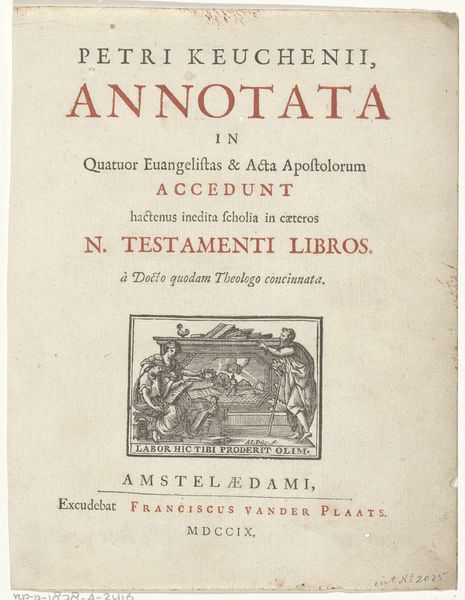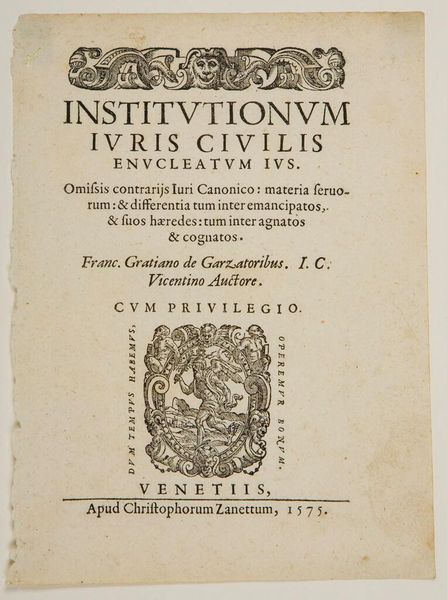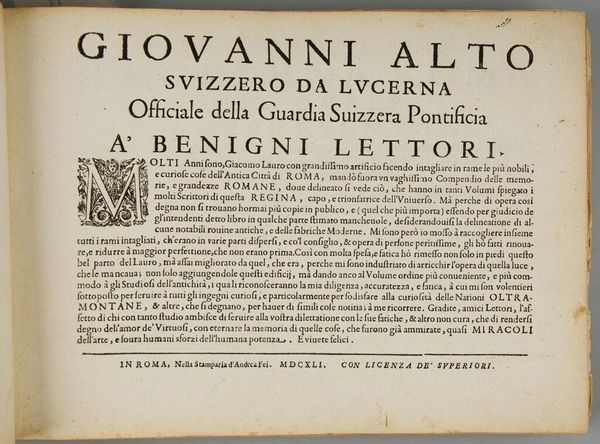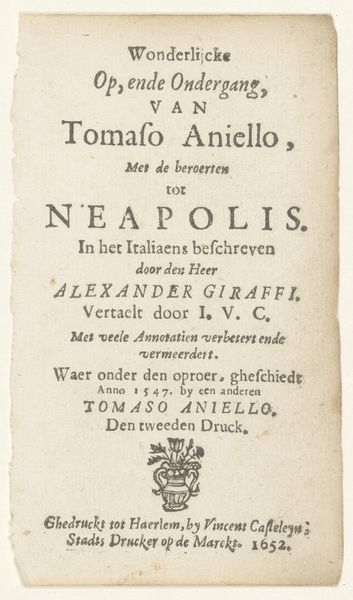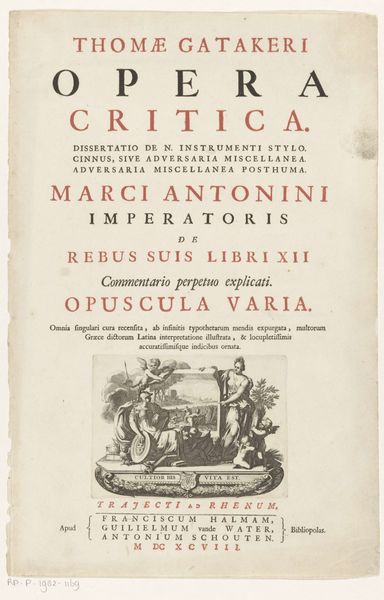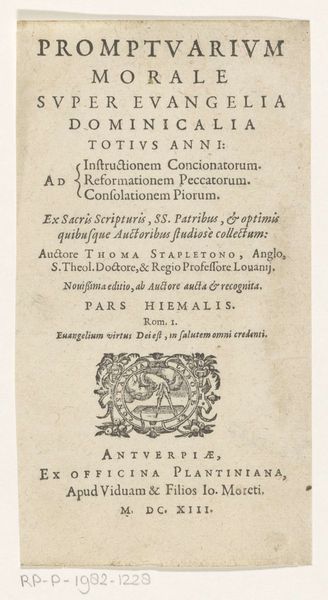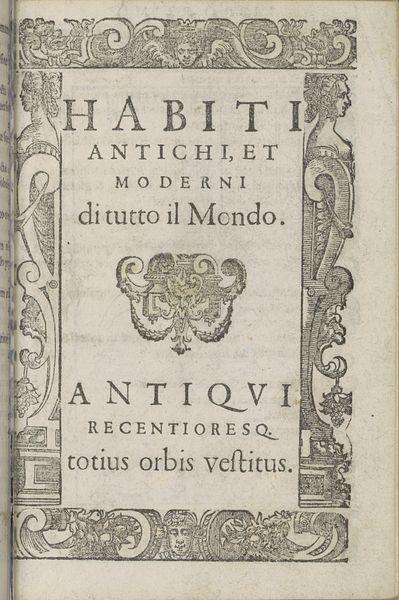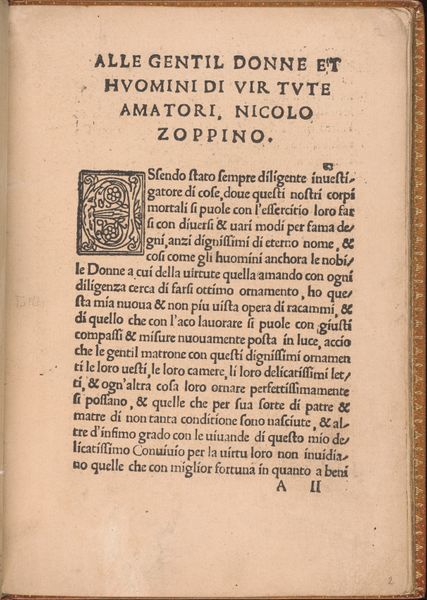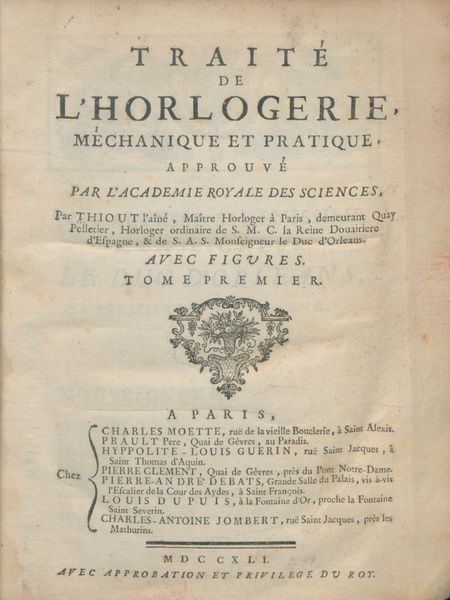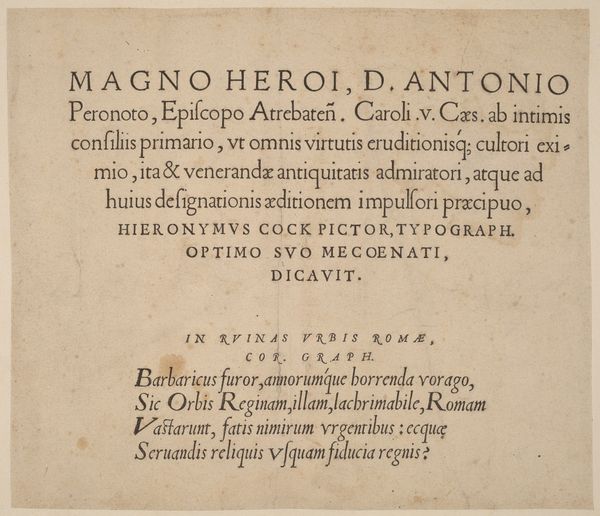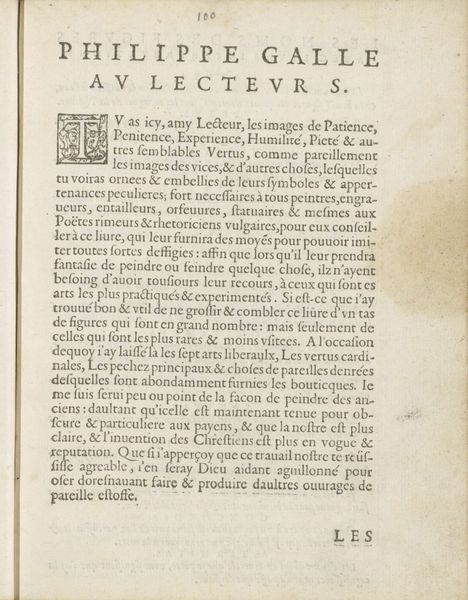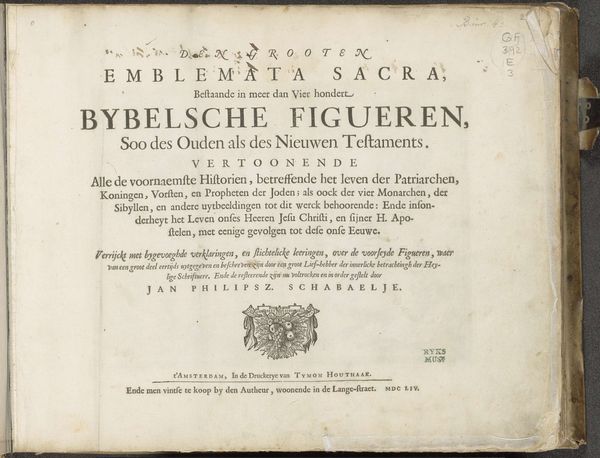
graphic-art, print, paper, typography, engraving
#
graphic-art
#
baroque
# print
#
paper
#
typography
#
engraving
Dimensions: height 54 mm, width 74 mm, height 352 mm, width 230 mm
Copyright: Rijks Museum: Open Domain
This engraving, found on the title page of a 17th-century edition of Marcus Antoninus, depicts Minerva and Ceres overseeing agricultural labor. Minerva, goddess of wisdom and warfare, and Ceres, goddess of agriculture, embody the Roman values of intellect and sustenance. But observe how these figures resonate beyond their immediate context! The motif of deities presiding over human endeavors echoes in Renaissance paintings and even earlier Greek sculptures. Consider, for instance, how the figure of a guiding goddess appears in classical allegories, often representing abstract concepts like justice or liberty. These archetypes tap into a collective memory, a deep-seated human need for guidance and order. The enduring power of Minerva and Ceres lies not only in their representation of Roman ideals but also in their engagement with the viewer's subconscious. They represent a cultural continuity, a non-linear progression where symbols resurface and evolve, carrying echoes of past meanings into new contexts.
Comments
No comments
Be the first to comment and join the conversation on the ultimate creative platform.
